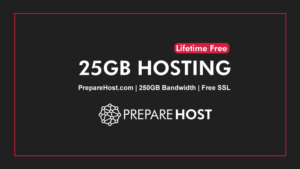Table of Contents
ToggleIf you’re new to solar energy, or even if you’ve been involved with it for some time, some things may leave you scratching your head, and asking such things as, “How do Solar Inverters Work?”.
Well, no more head scratching – let’s look at just how an inverter works.
Why Do You Need An Inverter?
Solar panels produce DC (direct current) electricity. DC hybrid inverter electricity is created by electrons moving in one direction from negative to positive. It’s mainly used in basic applications involving the use of a battery such as a flashlight and is good for use over short distances.
Most household appliances and electronic devices run off AC (alternating current) electricity. AC electricity is created by electrons moving back and forth between negative and positive terminals, producing a sine wave. The advantage of AC electricity is that the voltage can be adjusted, making it easier to move over longer distances, which is why it’s used in households.
Since solar panels only produce DC electricity, an inverter is used to convert the DC into usable AC electricity.
Inverters’ Waves Are Different
Inverters convert DC into AC electricity in steps to produce various wave forms. A basic inverter produces a square wave, but only a small voltage, so these are only used to run small appliances and light bulbs. If all you want is to run your coffee maker, this should do fine.
Some more sophisticated inverters use more steps to produce a modified square wave, or modified sine wave as they’re more commonly known, which is fine for motors, televisions and lights and large power surges, but may cause problems with more sensitive electronics and devices. These inverters also produce harmonic distortion, resulting in background hum in audio equipment.
The most sophisticated – and, therefore, most expensive – inverters use the most steps to produce a true or near true sine wave, and, as a result, are the type most found in residential PV systems. As more sensitive electronics such as computers were introduced into homes, these became standard for residences.
The Various Applications Of Inverters
In off-grid applications, DC electricity is stored in batteries. An inverter then converts the electricity from the batteries into usable AC electricity. The inverter must be large enough to power all the appliances and devices that will be running at the same time, and must be able to handle surges of power from clothes and dish washers, dryers, etc.
Grid-tied inverters supply power to the home when needed, feeding any excess power into the grid. They include sophisticated detection equipment which ensures they shut down when a grid outage is detected or when utility workers need to work on the grid.
Grid-tied inverters with battery backup work the same as grid-tied inverters as long as the grid is up, but, if an outage should occur, they’ll switch the home’s power supply to feed off the batteries. When the grid comes back on, the inverter DC hybrid inverter switches back to using the grid, while recharging the batteries.
As you can see, an inverter is essential if any or all your electricity comes from solar panels. Advances in inverter technology are being made all the time, with the main drawback being the lack of efficiency, since most inverters operate at only 90-95% efficiency.
Knowing the internal workings of an inverter is not vital, but selecting the right inverter for a particular application is, so consulting a solar professional or company on the right inverter to buy is extremely advisable.
Optimizing Solar Power System Performance by Sizing Solar Inverters
For home solar goers, the most important thing is to install a system that performs very well and helps reduce the entire electricity bill. Thus, optimizing the power generating system is by all means necessary, and sizing the solar inverter that works for the system is one of the best choices, for a solar inverter works to convert the direct current from solar panels into alternating current, which is used to power all the appliances DC hybrid inverter of a house.
Before deciding to calculate the size of the inverter for the system, you have two important things to consider: the total watts of all the appliances, which indicate the amount of electricity required by the setup, and the total units because they decide how much electricity can be used each day.
Today’s home solar systems
Besides this, today’s home solar systems can be generally divided into three types: standalone, grid-tie and battery backup systems. Different systems require different types of solar inverter installations.
Sizing an inverter for a solar power system is closely connected to the total watts of the family’s total appliances. The input rating of the converting device you use cannot be lower than the entire watts of these appliances. If you have fridges or pumps connected, you need to take serious notice of this advice. At the same time the size of the device should also match the watt of the solar panels installed on your rooftop. If it is in a standalone system, where batteries are used for the sake of storing direct current for required use, its nominal input voltage should be the same as that of the batteries.
Although you have learned the basic knowledge of sizing an inverter, you still need to be clear of the effects of under-sizing and over-sizing, because people who wish to go solar may meet these problems, which will influence the ultimate performance of your solar power system.
Simply put, a too big inverter can cost more of your budget, while a too small one cannot meet your required amount. In detail, the alternating current output is decided by the converting device not by the output direct current amount from the solar panels. If the solar inverter is not big enough, some direct current will be wasted in the converting process. On the other hand under-sizing an inverter can overheat the parts used in the system and make their lifespans become short. If it is over-sized, the whole system’s efficiency will be decided by the average point of operation. Therefore, its efficiency will shrink according to how much you have over-sized your device. Also, if you wish to add more solar panels, the system’s total performance will discount too.
Apart from sizing solar inverters
Apart from sizing solar inverters, sizing solar panels DC hybrid inverter and batteries also needs deep concerns, and this can make your system work better too. But these knowledge and experience cannot be absorbed in one day, and they need a long time practice and careful calculation.








